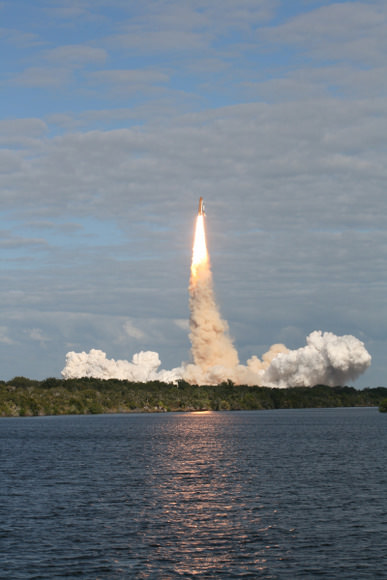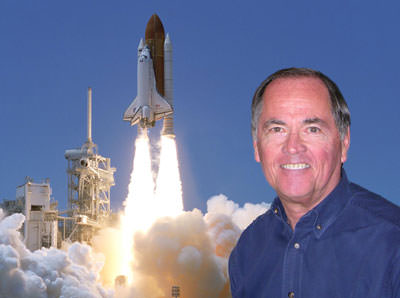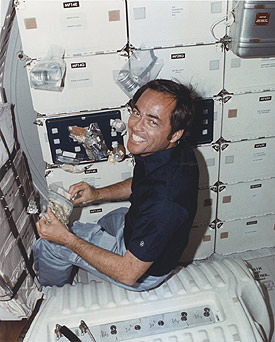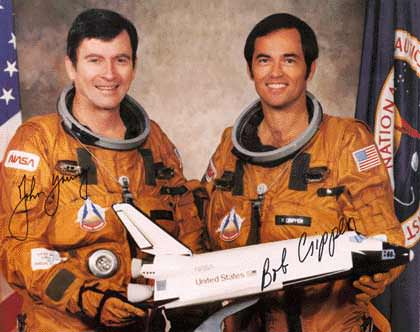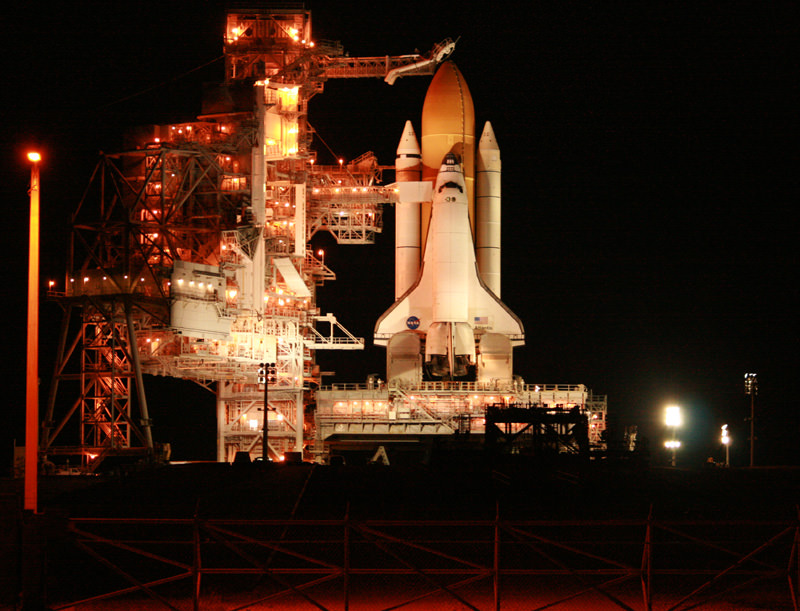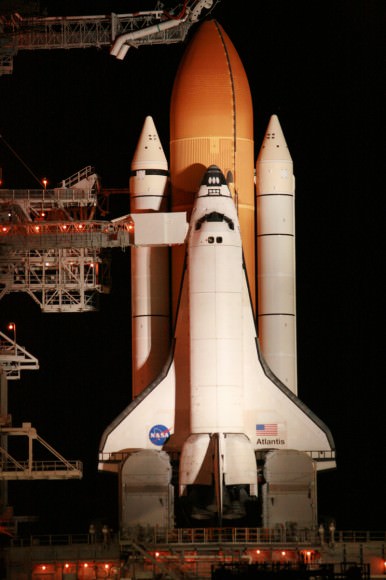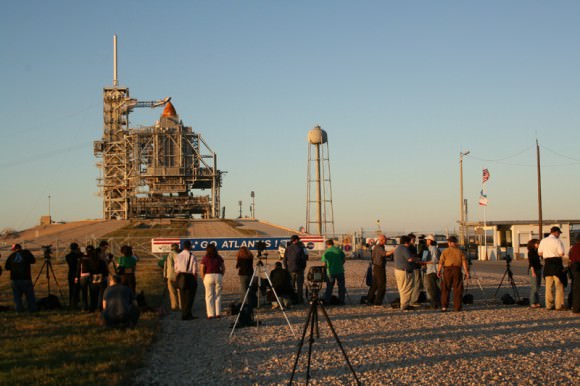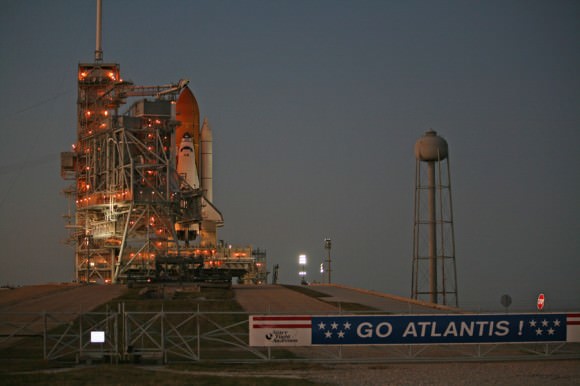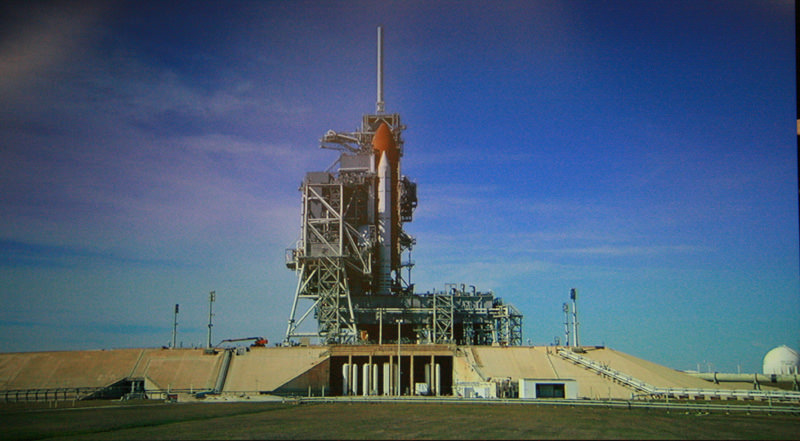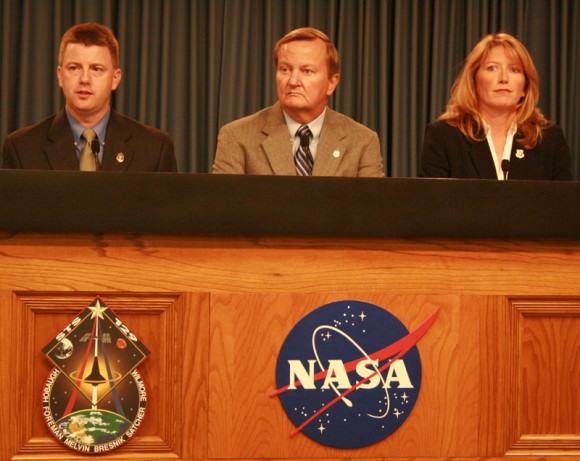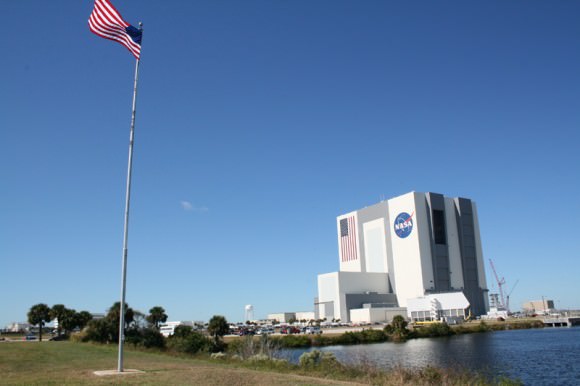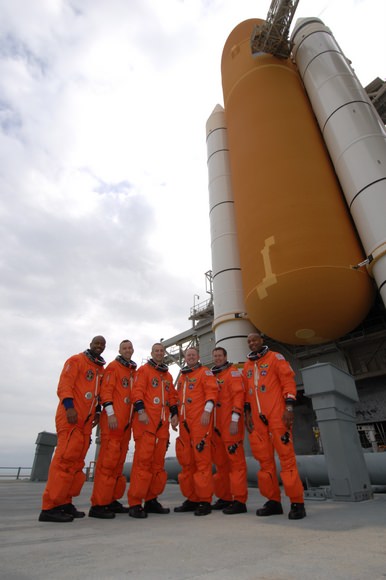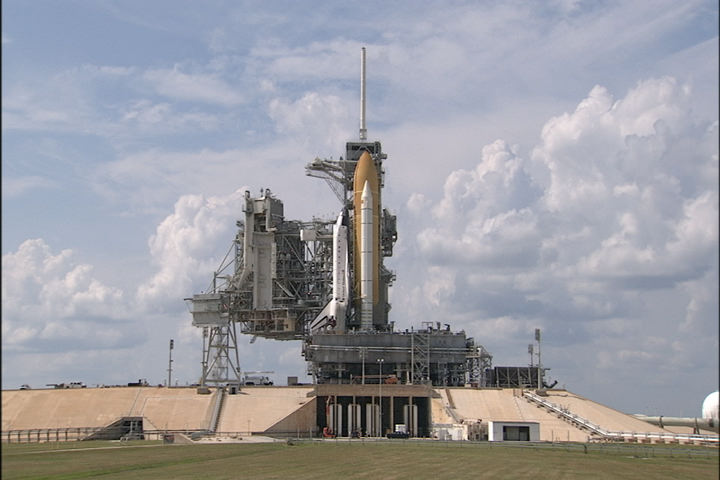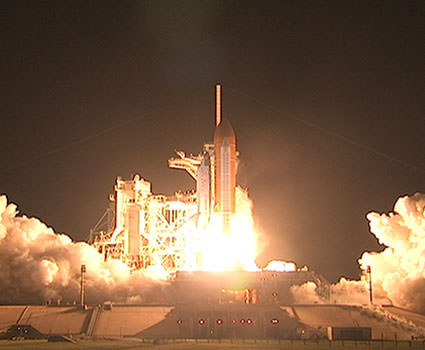(Editor’s Note: Ken Kremer is in Florida for Universe Today covering the launch of Atlantis.)
Space Shuttle Atlantis and her six person crew roared into space on Monday precisely as planned at 2:28 PM EST from the Kennedy Space Center in Florida. The yellow exhaust flames grew into a nearly blinding intensity as Atlantis ascended off the pad on a trail of crackling fire and smoke. For what felt like an eternity, it seemed like Atlantis would be engulfed in a rapidly expanding inferno emanating from her tail in mid air. The time span was in reality perhaps 5 seconds. Atlantis then dove straight upwards, arced over and finally looked like she would return back to Kennedy on a big circular loop directly through the wake of the exhaust plume. In fact that sight was just an optical illusion but the feeling was shared by other media I conversed with here at the KSC Press site.
[/caption]
As Atlantis rose on 7 million pounds of liftoff thrust following ignition of the 3 space shuttle main engines and twin solid rocket boosters we saw her rotate about her vertical axis. Atlantis swiftly rising exhaust trail was clearly visible for about three minutes as she ascended northwards up the east coast of the United States for her trek into the orbital plane of the International Space Station (ISS) and carefully choreographed link up in 2 days time.
Gloomy early morning skies which were completely overcast had threatened to delay the launch. At a post-launch briefing, even senior Shuttle manager Mike Moses related how he awoke to the unexpected turn in the weather and said “What the heck happened!”.
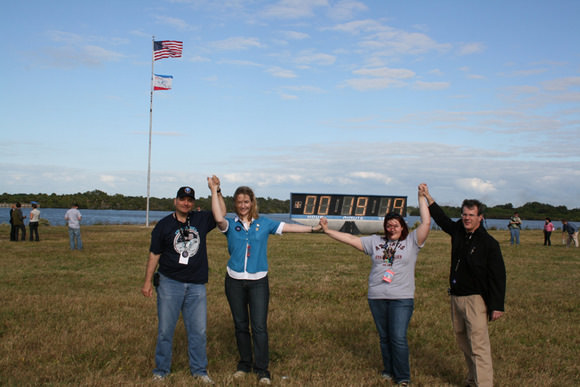
Ken Kremer met up with a group of lucky Tweeters at the KSC press center a few minutes after Atlantis blast off. Back dropped by the world famous countdown clock, pad 39 A and US Flag, they appear to be celebrating their good fortune to be invited by NASA to witness the drama first hand and instantly transmit their experiences across all earth’s continents. Do you think they are having a blast? Credit: Ken Kremer
Perhaps an hour before launch the thick cloud layer at last dissipated and Atlantis punched through the deep blue skies, thrilling everyone at KSC including the over 100 tweeters allowed onto the press site for the very first time, some of whom I met and expressed utter joy at having the best seat in the house.
STS 129 is carrying 15 tons of critical spare parts to guard against the fast approaching day when the shuttle is retired from service in about 1 year. The shuttle is a true spaceship whose vital role and capability to transport large components and replacement equipment to the ISS will remain unmatched for decades to come.
“We appreciate all the effort making this launch attempt possible. We are excited to take this incredible vehicle for a ride to another incredible vehicle, the ISS,” Commander Charlie Hobaugh said shortly before launch.
During three spacewalks, astronauts will install two platforms to the station’s truss, or backbone which will be used to store the spare parts brought aloft and also known as Orbital Replacement Units, or ORU’s.
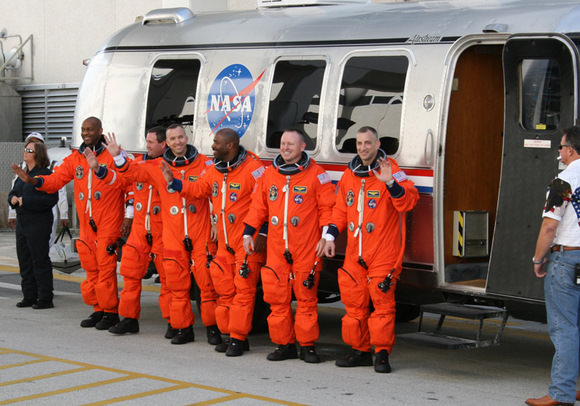
Hobaugh is joined on Atlantis’ STS-129 mission by Pilot Barry E. Wilmore and Mission Specialists Leland Melvin, Randy Bresnik, Mike Foreman and Bobby Satcher. Atlantis will return with station resident Nicole Stott, marking the final time the shuttle is expected to rotate station crew members. Wilmore, Bresnik and Satcher are first-time space fliers. All future ISS residents will ride aboard Russian Soyuz rockets.
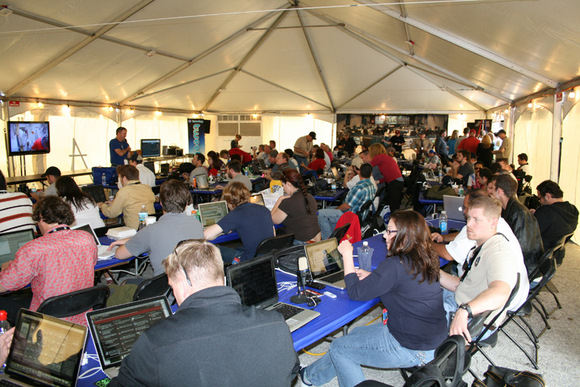
Indian TV interview with Ken Kremer at Launch Pad 39 A on NASA’s future, at this link
Read my earlier reports from KSC on the flight of Atlantis and Atlas launch attempt here:
Tweeters and Atlantis Ready for Launch
Clock Ticking for Shuttle Atlantis on Critical Resupply Mission
Atlas Launch halted by ORCA; Shuttle Atlantis Next in Line
Ken Kremer’s website

